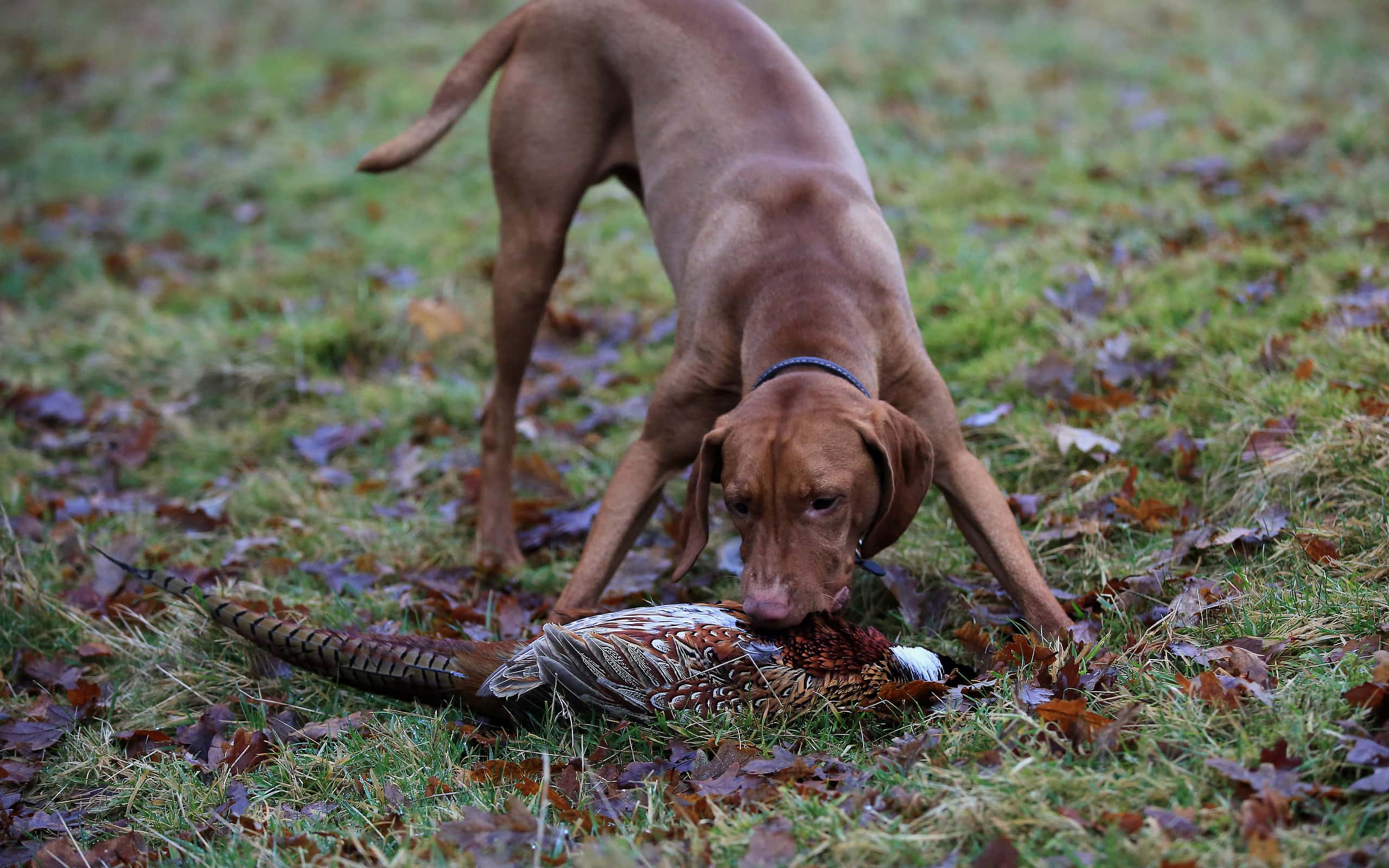Vizslas are affectionate, agile dogs that were originally bred for hunting. However, they can also make good companion animals, especially when trained and socialized well. Luckily, they tend to be very healthy and have a long lifespan, as they were bred mostly for practical purposes. (A sick or injured hunting dog won’t do you much good.)
That said, they can still develop some health problems. Let’s take a look at the primary Vizsla health conditions you should be concerned with:
1. Epilepsy
Epilepsy is the primary Vizsla health problem you need to worry about. Sadly, this condition does seem to be genetic – at least partially. It causes chronic seizures, though the reason behind these seizures is unknown. Often, affected dogs must be treated with medication for the rest of their lives. Dosing and getting the right medication can be a challenge.
Male Vizslas are more than twice as likely to have epilepsy than female Vizslas. Once again, we don’t know why that is, but it may be due to sex hormones.
2. Temperament Problems
One survey by the Vizsla Club of America found that around 25% of all Vizslas had at least one temperament problem. While these temperament issues aren’t necessarily linked to a dog’s physical health, they’re absolutely linked to its mental health. These issues can make a dog hard to live with.
Many temperament problems were reported. The most common ones were sensitivity to loud noises, reactivity toward other dogs, timidity, and hyperactivity. It is possible that some of these were related to how the dog was socialized and cared for. However, genetics may also play a role.
3. Cancer

These canines tend to be very active, and they may be prone to obesity if not exercised properly. Keeping them lean and mean is one of the easiest ways you can help them stay healthy.
©Bianca Pinkernell/Shutterstock.com
Vizslas also have a relatively high instance of cancer rates. In fact, as many as a fourth of these dogs will develop a tumor or other form of cancer in their lifetime.
That said, studies have shown that dogs who are spayed and neutered early have a much higher chance of cancer. It may be smart to wait until your dog is at least one before spaying or neutering to reduce this cancer risk. Of course, you also have to consider the full benefits and downsides of spaying or neutering.
The reason for this isn’t known all that much. However, it may be because the sexual hormones during a puppy’s growth provide some protection from cancer later on.
4. Skin and Allergies
Skin problems and allergies often go hand-in-hand. Many skin problems are caused by allergies, after all. Allergies to food and environmental factors often present as itchy skin. The dog will often bite their paws and rump due to this itchiness, which may cause inflamed skin, sores, and even infections.
Vizslas are particularly prone to sebaceous adenitis, which is an autoimmune disease that causes itchy, scaly skin. It’s an incurable disease that can be a huge pain for owners and dogs alike. Luckily, this condition is slowly being bred out of the breed, but it can still be a problem for lower-quality breeders.
5. Eye Disease
Like many dog breeds, Vizslas are prone to some eye conditions. The most common one is Progressive Retinal Atrophy, which is genetic and extremely common across most dog breeds. This condition is progressive, which means it gets worse over time and isn’t curable. Often, it leads to blindness.
Of course, there are many other eye conditions, as well. Cataracts and glaucoma can occur in both young and older dogs (though they most commonly occur in seniors). Luckily, both of these conditions are much more curable than PRA.
Another Vizsla health condition is ocular melanosis, which results in the formation of dark, pigmented growths on their eyelids. It often occurs with glaucoma, so it is sometimes also called pigmentary glaucoma. It’s an inherited condition, though exactly how it is inherited isn’t well understood.
6. Hip Dysplasia

Nutrition is another key way to keep your dog healthy, especially regarding hip dysplasia.
©Tomas Maracek/iStock / Getty Images Plus via Getty Images
Like most larger dogs, Vizslas can also develop hip dysplasia. This condition causes the hip joint not to develop uniformly while the dog grows, leading to extra wear. Once it occurs, the dog will have the condition for the rest of their life.
Dogs are often genetically predisposed to this condition, so careful breeding is necessary. Most quality breeders will test their dogs’ hips before breeding to ensure they don’t have “hidden” hip dysplasia.
That said, environmental factors can also contribute to this Vizsla health condition. Nutrition is a major factor, for instance. Ensure you feed your Vizsla proper puppy food while they are growing. Dogs should be kept at a healthy weight, and puppies should have their food carefully measured. Often, puppies act hungrier than they actually are.
7. Blood Disorders
Vizslas can also develop blood clotting disorders. Hypofibrinogenemia is a rare but very serious blood condition characterized by a lower-than-normal concentration of fibrinogen in a dog’s bloodstream. Fibrinogen is a key component of blood clotting, so dogs with this condition will bleed more than other dogs.
Often, this condition is undiagnosed until they dog is spayed or neutered. During surgery, they will bleed excessively, which allows the vet to make this diagnosis. Vizslas may need to be tested before surgery to prevent complications, though.
This condition has varying severities. Sometimes, it is very minor. Other times, the dog may practically not clot at all.
Ready to discover the top 10 cutest dog breeds in the entire world?
How about the fastest dogs, the largest dogs and those that are -- quite frankly -- just the kindest dogs on the planet? Each day, AZ Animals sends out lists just like this to our thousands of email subscribers. And the best part? It's FREE. Join today by entering your email below.
Thank you for reading! Have some feedback for us? Contact the AZ Animals editorial team.








